In the Footsteps of Gengis Khan in the Mongolian Steppe: Part 3
Bill Dennison ·Training Mongolians to Develop a Tuul River Report Card
After our field trip, Simon Costanzo, Michele Thieme and I held a two and a half day workshop in Ulaanbaatar, working closely with WWF Mongolia and key stakeholders in order to develop the skills and strategies needed to create a Tuul River report card. We structured the workshop around the five steps of report card development: Conceptualization, Choose indicators, Determine thresholds, Calculate scores and Communicate results. We also spent time mapping stakeholders, developing a timeline, and identifying roles and responsibilities.

On Day 1, we introduced our ‘Healthy Rivers for All’ initiative (WWF & UMCES), and provided an overview of the report card process. We then devoted the rest of the day to Conceptualization. This involved various exercises intended to help people grasp the health of the Tuul River. For the first exercise, we passed a card out to workshop participants as they entered the room. We asked each person to list three words to describe the Tuul River, then used these to form a word cloud. Pollution was the dominant word identified by workshop participants. We also projected a map of the Tuul River onto a white board and asked people to nominate key features to place onto the map. This map provided a geographic context for Tuul River issues.
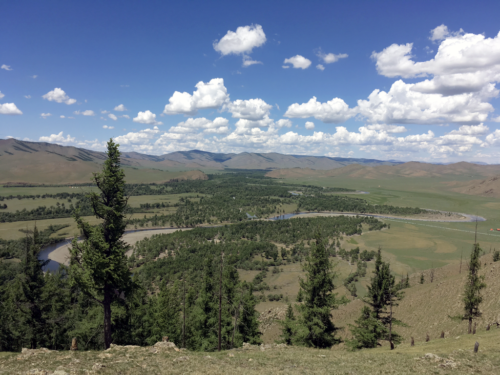
Another conceptualization exercise we used is ‘Snap.’ Each participant obtained sticky notes and wrote down three values they associated with water quality and three water quality threats. Simon placed these on a wall, and everyone ranked the aggregated values and threats from most important to least important. The four highest ranked values were water availability, water quality, research & education, and income/livelihoods. The top priority threats were pollution, poor governance, reduced flows, and population density.
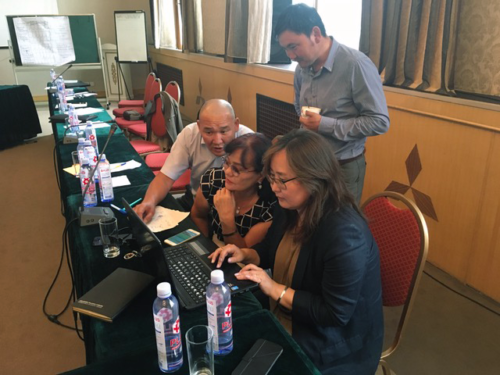
The final conceptualization exercise used was called ‘Conceptionary.’ Our topics for conceptualization were 1) Gold mining next to the Tuul River can lead to water quality degradation, 2) Wastewater from urban treatment plants (e.g., Ulaanbaatar) and tourist camps upstream lead to water quality degradation, 3) Pit latrines from ger districts in Ulaanbaatar contaminated groundwater, and 4) Gravel collection for use in construction degrades Tuul River habitat near Ulaanbaatar. Using these topics, the participants produced some wonderful symbols and diagrams.

On Day 2, we started matching these values and threats with six categories of the basin health report card: water quality and quantity, ecology, health and nutrition, management and governance, and economy, management and governance. Simon introduced these indicators using a human health analogy in which I played a patient visiting a doctor for a health checkup. The heart rate and blood pressure values that he gave me would have been enough to send me to the hospital!
With that dire analogy, we broke into four groups to discuss and draft indicators and thresholds. To experiment with score calculation, Simon provided an example data set and had the groups analyze it individually. Afterwards we discussed the different methods of score calculation. The key message was that regardless of method, you must provide a transparent, reproducible process.
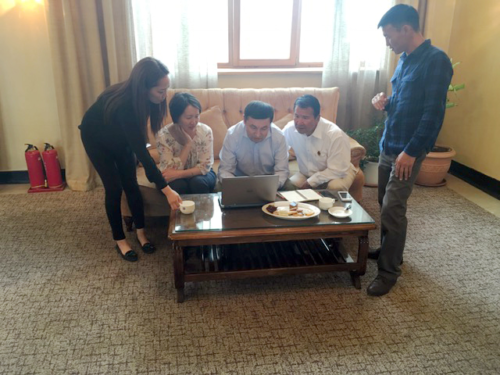
After this brainstorming session, I provided a summary of potential climate indicators based on work of Professor Masa Watanabe from Chou University, Japan. I had learned about his Mongolian studies at the Environmental Management of Enclosed Coastal Seas (EMECS) conference in St. Petersburg, Russia, which prompted me to search out his reports. Dr. Watanabe has recently received an honorary degree from the National University of Mongolia for his work on climate adaptation in Mongolia. As part of a United Nations Environment Programme, he investigates climate impacts and developed adaption strategies. The strategies that Dr. Watanabe recommended for the nomadic herders include lower livestock densities, earlier harvest and meat storage systems. He also currently works with some engineers to develop solar powered freezer systems that can be used by nomadic herders. His previous work on climate adaptation provided good grounding for Tuul River report card indicators.
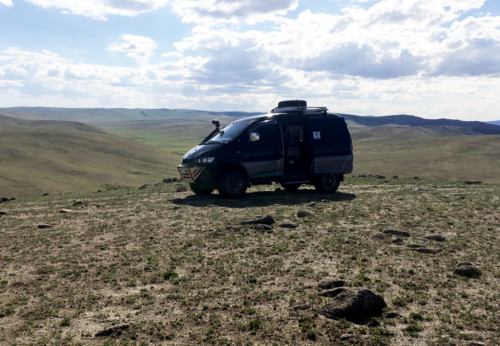
On Day 3, we discussed Step 5: Communicating results. We provided examples from other report cards and then talked about a theory of change based on these report cards. We also introduced the concept of establishing environmental literacy principles for the Tuul River. We also performed stakeholder mapping by placing the names of different government agencies, businesses, non-government organizations, and citizens and media outlets on a chart of influence and power vs. interest.
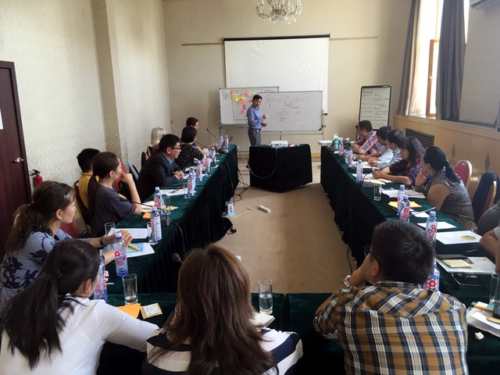
We established three groupings: high interest and low influence, low interest and high influence, and high interest and high influence. For each group, we developed strategies to increase their effectiveness. For the high interest and low influence group we focused on empowerment; this included training and capacity building, organizing events and providing a knowledge-sharing platform.

For the low interest and high influence group, strategies to increase interest included raising awareness, establishing partnerships, and environmental literacy development. For the high interest and high influence group, strategies to foster leadership included identifying duties, increasing responsibility, obtaining financial support and improving collaboration. We identified roles and responsibilities, a leadership team and established a timeline, including the dates of the first stakeholder workshop in October. To wrap up the workshop, I provided a comparison of two Italians that traveled to Mongolia, first Marco Polo, followed some 700+ years later by Simon “Khan” Costanzo. I also read the following poem:
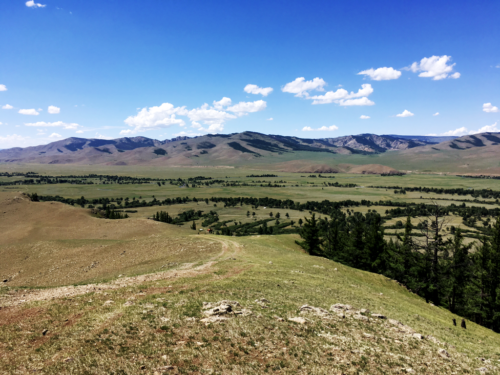
Land of the Eternal Blue Sky
7 July 2017
Driving off-road through the Mongolian steppe
Part of the Tuul River report card prep
Watching livestock grazing with nomads herding
Driving through rough spots with our vehicle lurching.
Viewing the Tuul River snaking along with its riparian trees
Enjoying the sunshine and nice summertime breezes
Watching the children in the river having a splash
Before we had to climb back into our vehicle and dash.
Making short friendly visits to nomads in their ger
Offering us their cheese and yogurt to share
Cute children staring at our western features
Wondering who are these strange creatures?
Watching scenery that literally gave me the chills
Absolutely stunning vistas with rolling green hills
The Mongolian countryside is simply breathtaking
But we learned about some problems in the making,
What the monitoring data very clearly shows
Is that water consumption is shrinking Tuul River flows
And problems can arise from activities involving mining
Which can lead to the Tuul River health declining.
So we recruited a ‘Healthy Rivers for All’ team
Training folks how to use a report card to help us dream
About making the Tuul River as healthy as can be
For everyone in Mongolia and the world to see.
About the author
Bill Dennison

Dr. Bill Dennison is a Professor of Marine Science and Vice President for Science Application at the University of Maryland Center for Environmental Science.

